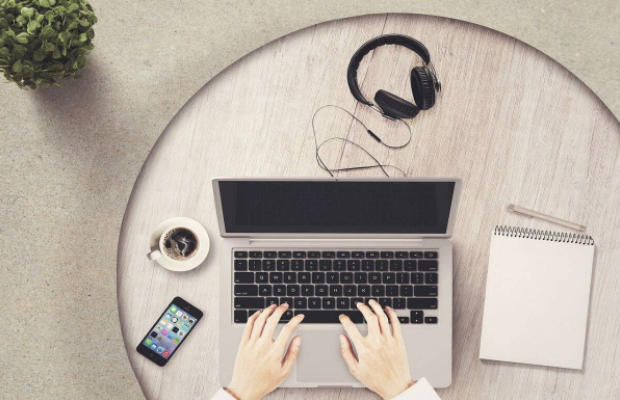EXISTENTIAL ANGST: WORKING FROM A BOX DURING THIS PANDEMIC
- Sep 1, 2020
- 3 min read
Updated: Jun 29, 2021
In a seemingly irrational state of disarray, several of us have been thrown into the world, albeit a new one, of ‘life amidst a pandemic’. Yet, our natural propensity for meaning-making ensures that we continue to function admirably. Despite the world’s meaningless absurdity, several of us have taken a ‘leap of faith’: continuing our existence despite the anxiety-provoking irrationality of our choices.
Existentialism considers fundamentally the individual and formation of the existential self. In the workspace, the existential self occurs through the transformation of choice into action within the everydayness of work. The pandemic’s revelation, that we are actors on a stage, has revealed to us the workings of the play: work has begun to creep into our personal space. Setting boundaries between work and personal space involves:
1. Having a distinct, separate area of work
2. Maintaining regular work hours, working the same timings nearly every day
3. Shifting in and out of work clothes as you transition from work to personal time
4. Setting disruption boundaries for work:
Communicating to your family what disturbances are okay or not okay
Communicating living situation details to workspaces for work flexibility
Communicating financial situation to workspace for requesting work-related tech or equipment
Setting aside or making it difficult to access social media or personal tasks as you work
5. Having a work schedule that mimics your office schedule: 10-minute breaks, lunch break, snack break
6. Not working during breaks
7. Not working after set work hours, to prevent work from creeping into personal time
Work-life balance is influenced by several factors: type of job, work tools, house environment, neighborhood environment, family atmosphere, self-discipline, work style, job demands/expectations, and the like. Notably, organizational and job-related factors from the company’s side influence work from home satisfaction and productivity more than work styles or household traits, write Baker, Avery, and Crawford (2007).
Working from home is a scenario influenced by elements both in and outside our control: homeworkers will struggle to adapt to rapid transitions in personal, temporal, and physical boundaries for both home and work.
With the increased intrusion of work, personal time fragments: we work and relax in the same space at various times. Minimizing the consequences of work creep involves:
1. Having set work hours and not working extra hours with good cause
2. Looking out for signs of burnout
3. Taking the necessary sick days
4. Relaxing with non-work activities during days off
5. Ending work time with a routine. Routines are signals to your brain that you are shifting from work time to personal time
6. Staying organized
7. Working at your peak productivity period, then gradually slowing down before winding up
8. Pre-plan work projects through chunking
9. Communicating work-life boundaries to colleagues
What times they can and cannot message you about work
Which days you won’t be checking your messages or emails
How to get in contact with you for a work-related emergency
What work-related emergencies can they get in touch with you for
Other complications include reduced contact with colleagues, loneliness, low self-esteem, loss of motivation, role conflicts, conflicts with shared tools, conflicts due to shared space, stress or anxiety from the intrusion of work into parenting or personal responsibilities, longer work hours, childcare flexibility, reduced time off, and vague standards of performance. Due to wide variations in personal finances, household or neighborhood environments, and living situations, involuntary work from home may be an inequality time bomb.
Socially, work from home deprives individuals of the inherently social aspect of a workspace, vicarious learning, peer support, peer teaching, social contribution, social recognition, and the experience of a shared community. To address social well-being, try:
Communicating and learning from colleagues during work hours (affiliation)
Discussing work projects, difficulties, tips (vicarious learning)
Attend meetings, offer feedback, present ideas (recognition, social contribution)
Psychologically, it impairs our ability to engage in meaningful work, develop specialized intelligence, work autonomy or competence, while interfering with our needs of recognition, contribution, affiliation, plays at work, overcoming obstacles, and building self-respect. Moreover, working from home’s isolation reveals both our areas of self-sufficiency and areas of dependence in relation to work. Addressing the social and psychological mental health aspects of working from home prevents further biological or physical tension in the form of fatigue, anxiety, disorientation while promoting positive psychological health. Disadvantages compound disadvantages until the assortment begins to affect mental health by reducing social, physical, and psychological well-being, which are states of good mental health, ability to manage stress, life satisfaction, and health.
During this time, consider therapy. A trained therapist can help address and improve issues of confidence, productivity, boundary management, stress, burdensome workload, irritability, and difficulties with a work-life balance.
“In all disorder, a secret order”, writes Jung: what sort of stability are you looking for?
Written by - Annie James
Your mental health matters as much as your physical health. Don't hesitate to take a step towards your mental well-being. If you’re looking at talking to a professional, book your Initial Consultation with us on https://www.themoodspace.com/freeconsultation or write to us at info@themoodspace.com. Take a step towards bettering your mental wellbeing because you deserve it!






Comments